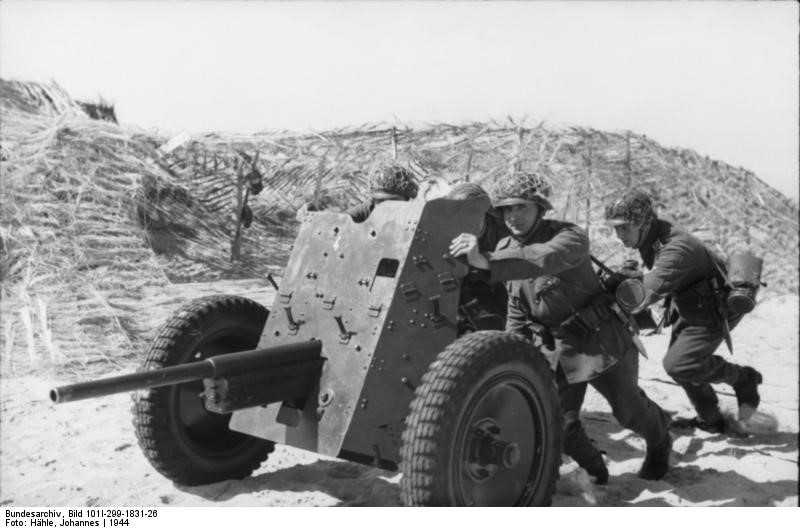
| Year | March 1936 |
| Weapon Type | Light Anti-Tank Gun |
| Origin & Designer | Germany/Rheinmetall |
| Numbers Produced | 15.339 |
| Crew | 5 (Gun Commander, Gunner, Loader & 2 x Ammunition Bearers) |
| Calibre | 37mm (37x249R) |
| Elevation | -5° to +25° |
| Traverse | 30° |
| Breech | Horizontal Sliding Block |
| Recoil | Hydropneumatic |
| Gun Sight | Z.F. 1 x 11 |
| Gun Mount | [@gun_mounts] |
| Carriage | Split Trail |
| Trailers | [@trailers] |
| Gun Shield | 4.4mm |
| Armoured Plate | [@armoured_plate] |
| Barrel Length | 1.650mm (L/45) |
| Overall Length | 3.04m |
| Width | 1.65m |
| Height | 1.17m |
| Weight | Weight in Traction: 440 kg Weight in Action: 328 kg |
| Round Weight | Sprgr Patr 0.97 kg (HE) Pzgr 40 - 0.97 kg (AP) |
| Muzzle Velocity | 1.020 m/s (AP) 680 m/s (HE) |
| Feed | [@feed] |
| Magazine Capacity | [@magazine_capacity] |
| Practical Rate of Fire | [@practical_rate_of_fire] |
| Rate of Fire | 13 r.p.m. |
| Maximum Rate of Fire | [@maximum_rate_of_fire] |
| Maximum Ceiling | [@maximum_ceiling] |
| Maximum Ground Range | [@maximum_ground_range] |
| Maximum Range | 5.484m |
| Armour Penetration | 31mm @ 500m @ 30° |
| Traction | Motorised (Protze Kfz 69 & Sd.Kfz 10) |
| Variants | [@variants] |
| Notes | The Pak 36 was the standard anti-tank gun available to the German army in 1940. It was light, easily managed in action and adequate when dealing with light tanks but against heavy tanks it was found wanting and earned the name Heeresanklopfgerät (army door knocker). It was gradually withdrawn from front line use and replaced by the 50mm PaK 38, but some remained in service and given a new lease of life with the introduction of the Stielgranate 41 (shaped charge). It was also mounted on halftracks and used as an infantry support gun. |